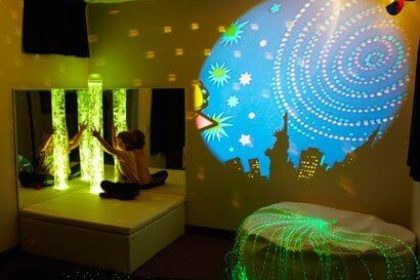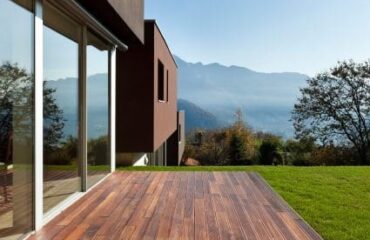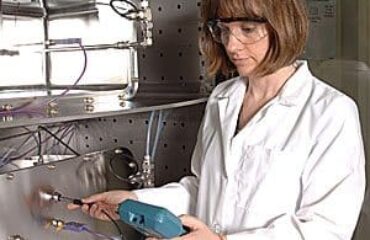Design as Therapy – A New Approach

Design as Therapy
In the world of building we have control over what comes into contact with our senses. What we see, hear, smell & feel can all be addressed during the design of a building. For the most part these sensory cues are perceived subconsciously and exist in the background. But there are instances where the interior design of a space takes center stage and shows us its ability to affect our behavior utilizing design as therapy.
Interior designer & professor Kijeong Jeon at California State University, Chico, is one of the pioneers of using the built environment as therapy. He creates multi-sensory environments that are aimed at helping people with autism by using design as therapy. These environments are filled with fiber-optic lighting, mesmerizing projections, undulating surfaces, & biomorphic furniture. These features simultaneously sooth, encourage exploration and inadvertently inspire us to ask the question, “How can we design for our own health?”
Jeon’s foray into this niche began with his 2008 work for the COVE. It was commissioned by California Vocations Inc. in Paradise, California as a day program for people with autism and other mental disabilities. Bob Irvine, Executive Director for the COVE, called Jeon asking if he could help pick out a carpet. Before answering the question, Jeon requested more time to learn about autism. He could not choose the carpet until he knew about the people he was choosing it for. To Jeon the carpet was not only about aesthetics but intention.
“During the study of autism I noticed that some of the symptoms are related to tactility, lighting, sound, smell. I realized that all of them deal with the environment. So I thought if those are environmental issues, I can do something for them- I can design certain interior spaces to make them feel at ease. Certain types of colors, certain types of lighting…”
Researching Design as Therapy
Jeon’s research went from just finding the right carpet to investigating the correct sensory dynamic for the space. He came upon the Dutch design therapy SNOEZELEN, which is a combination of two Dutch verbs “snuffelen” (to seek and explore) and doezelen (to relax).
Unlike other therapies where there is a specific exercise and a desired effect, exploration in the SNOEZELEN room is the therapy. A lot times people with autism are not able to interact with their environment; their senses are either overwhelmed with stimuli or so under stimulated that they retreat into themselves. The point of SNOEZELEN is to provide the motivational stimuli to engage while at the same time inducing a state of calm. Moreover, other therapies can take place because the room is designed to support them.
Jeon’s multi-sensory environments are demonstrating the benefits of SNOEZELEN rooms across the country and world. These findings are not just beneficial for people struggling with autism and other physiological conditions, but contribute something to the building community at large. They reveal that the more we know about how design affects our psychology and physiology, the better we can create spaces geared for our health and happiness. This line of thinking is beginning to pop up in mainstream design. Interior designer AJ Paron Wildes, who specializes in office design, coined the term Design Empathy at the 2013 Hatch Festival. The WELL Building Standard is the first green certification system meant to address occupant health and includes credits that have to do with Comfort and Mind. The concept of Biophilia, which posits the instinctive bond between human beings and nature is starting to be seen as an important aspect of healthy building design, so much so that the Living Building Challenge and the WELL Building Standard incorporate it into their certification credits. Hopefully this is only the beginning of linking building with the nuances of design and emotional well being.





